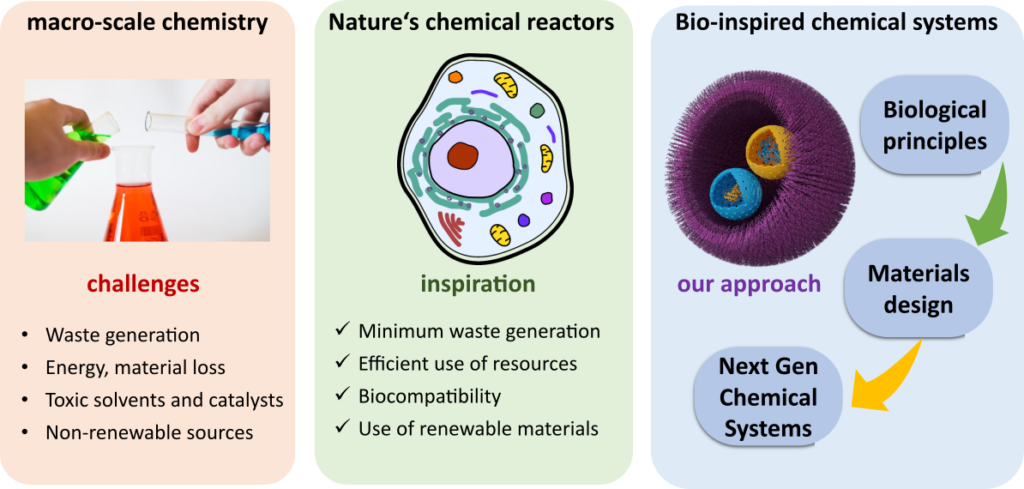Research
Exploring Nature’s Chemistry for a Sustainable Future:
In nature, biological cells serve as highly efficient chemical reactors, synthesizing complex molecules under mild conditions in aqueous environments. Traditional synthetic chemistry, on the other hand, often relies on toxic organic solvents, extreme conditions (such as high or low pH, pressure, and temperature), and produces harmful by-products that pose significant environmental risks.

Our mission:
What can we learn from cells to make our chemical methods more efficient? We believe the answer lies in the way cells organize and regulate complex chemical processes through adaptive and selective compartmentalization. By confining catalysts and processes within specialized compartments such as organelles, aggregates, and biocondensates, cells create optimal conditions for chemical reactions.
Our approach:
We aim to create synthetic versions of biological compartments and use them to organize, stabilize, and control chemical processes in synthetic chemistry. To achieve this, our group focuses on developing catalytic chemical systems that mimic the architecture, efficiency, and adaptability of cells.
Specifically, we are:
- Designing Multi-Compartment Catalytic Structures: Creating microreactors using biomimetic compartments like polymer vesicles, coacervates, and nanoparticles. These microreactors, ranging from 5 to 50 microns in size, mirror the complex structure of cells.
- Developing Robust Polymeric Vesicles: Utilizing block copolymers to form polymeric vesicles that mimic cell membranes but with enhanced robustness and functionality.
- Innovating Coacervates: Developing coacervates as synthetic models for biomolecular condensates to form adaptive compartments with tunable properties.
Impact:
By mimicking the efficiency of biological cells, we aim to develop greener, more efficient catalytic systems that improve the precision, speed, and yield of chemical reactions. In addition, our work provides valuable insights into cellular organization and function, bridging the gap between synthetic chemistry and biological processes. The innovative methods and technologies we create have broad applications in pharmaceuticals, materials science and biotechnology, and promise significant societal benefits.